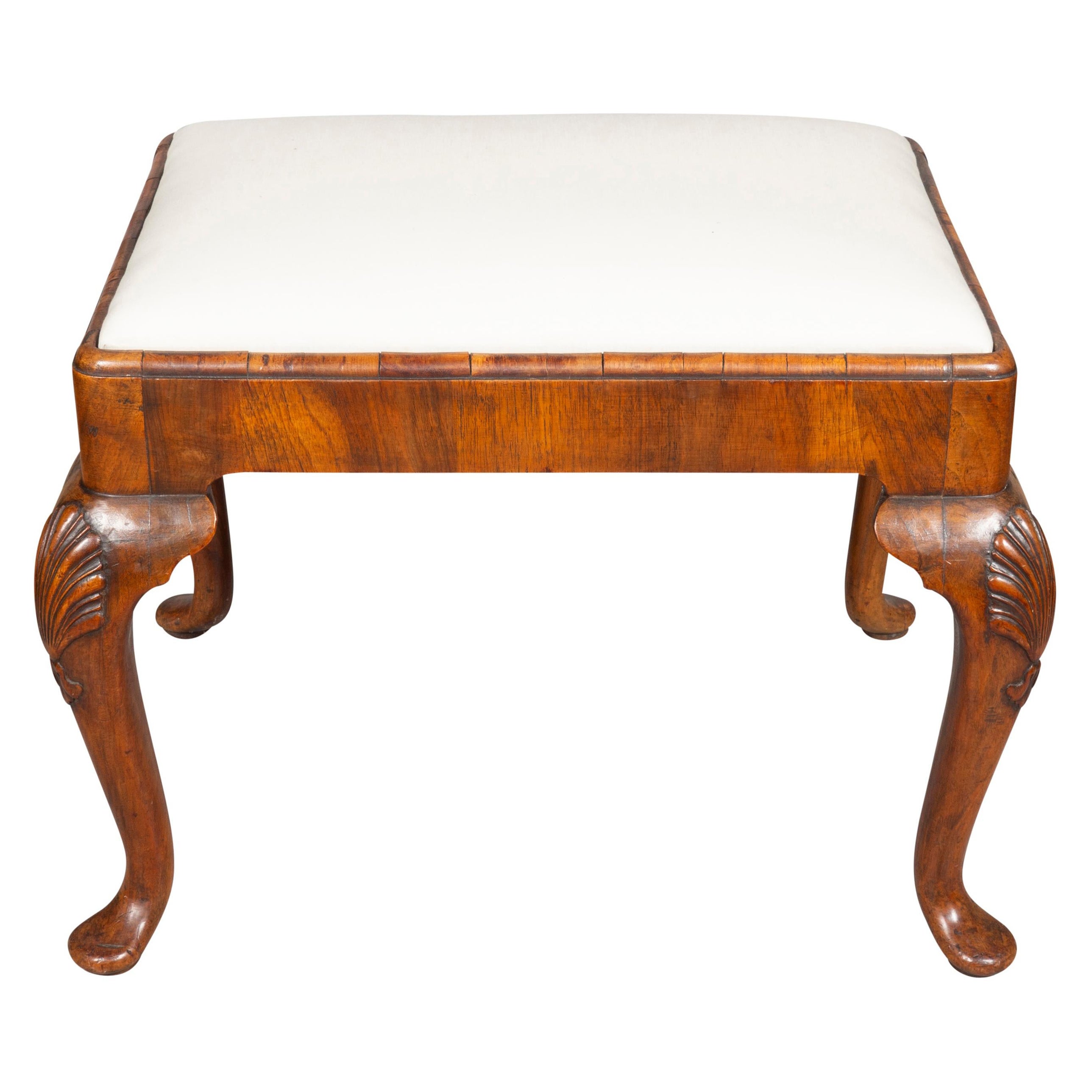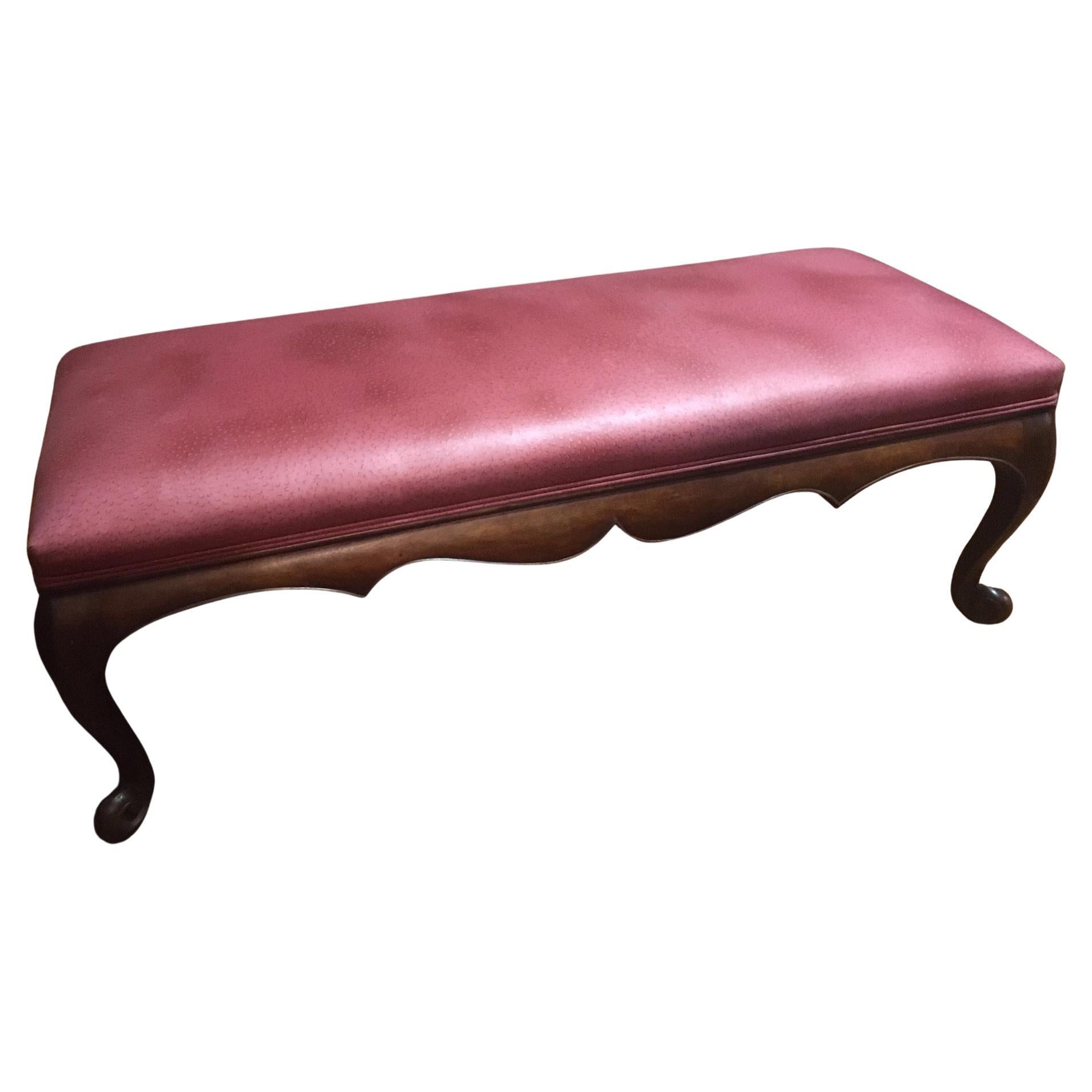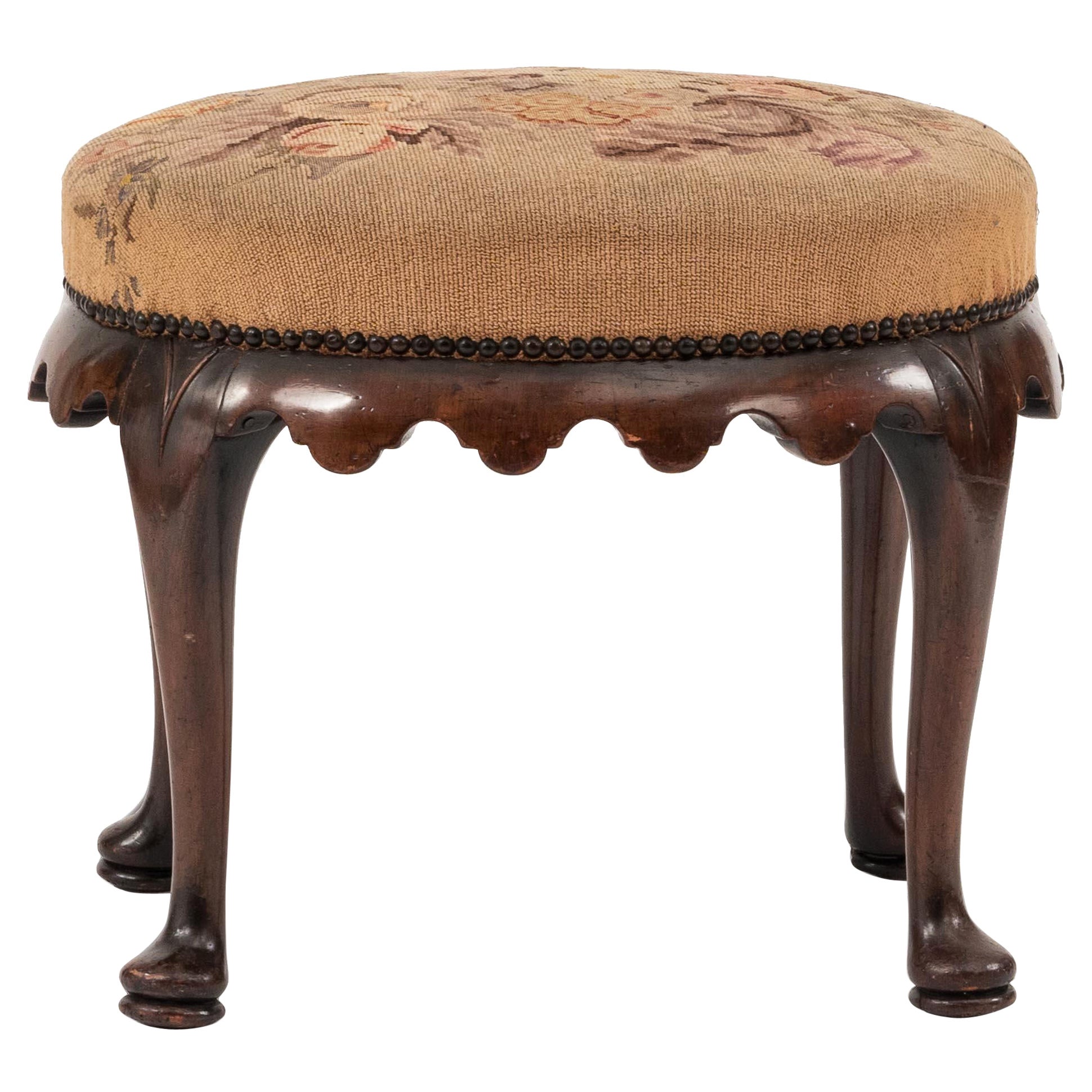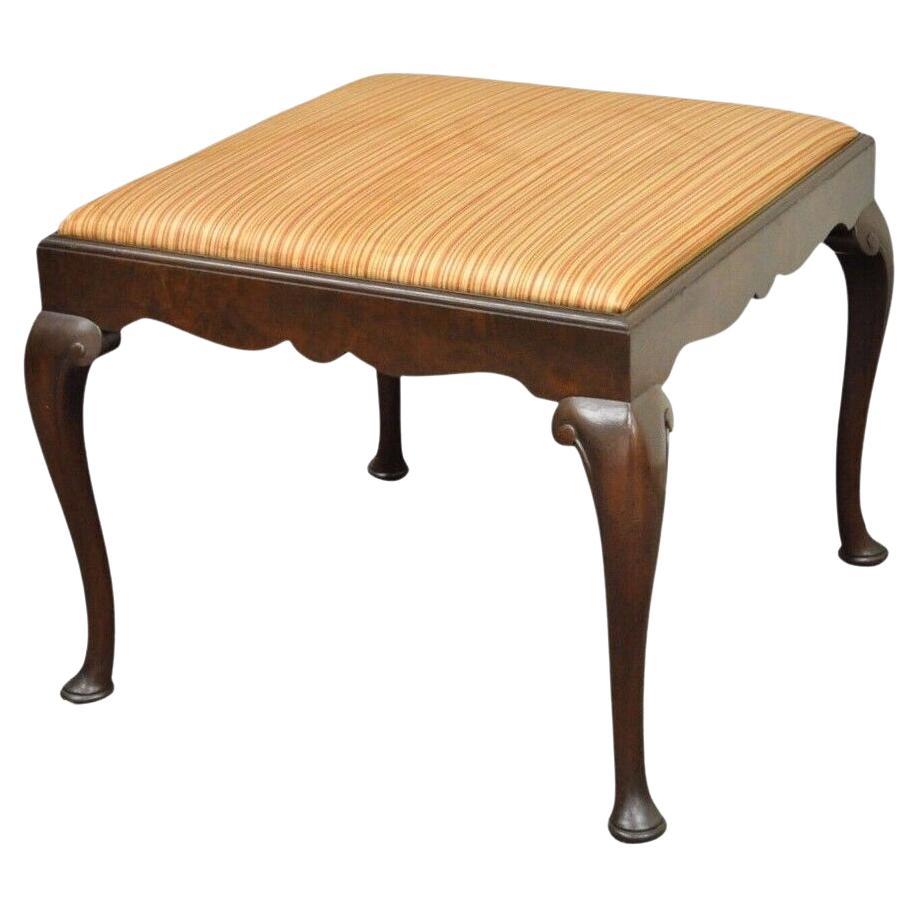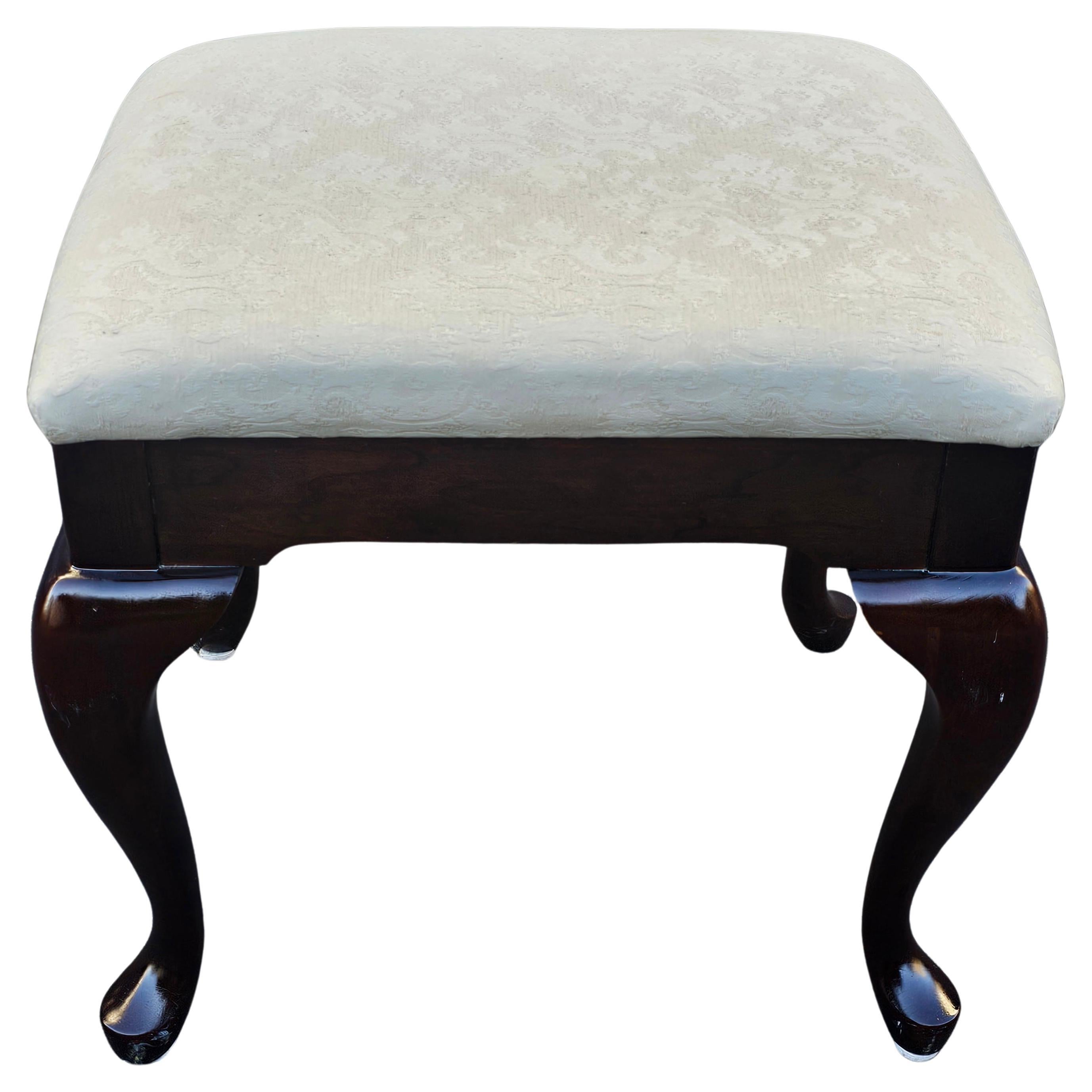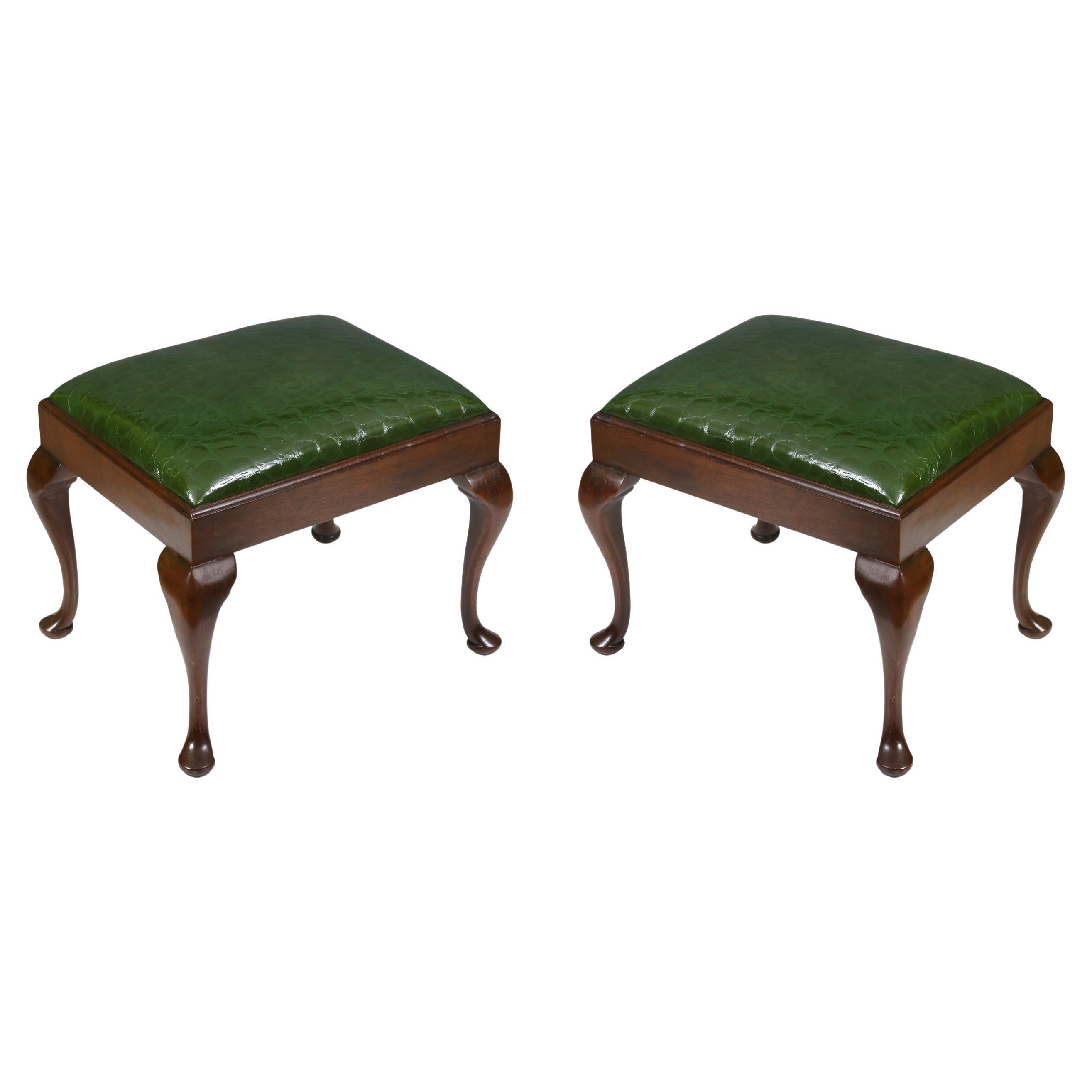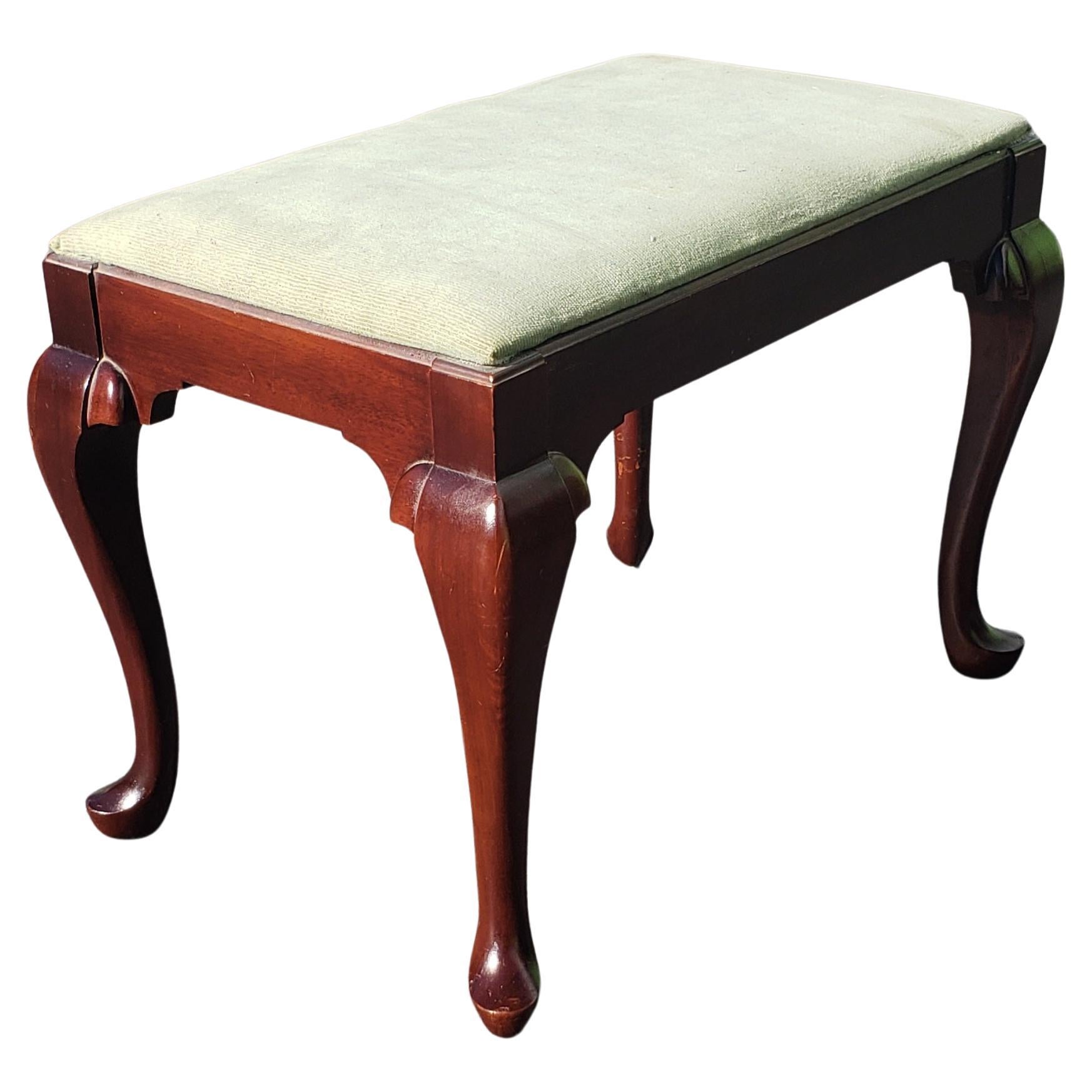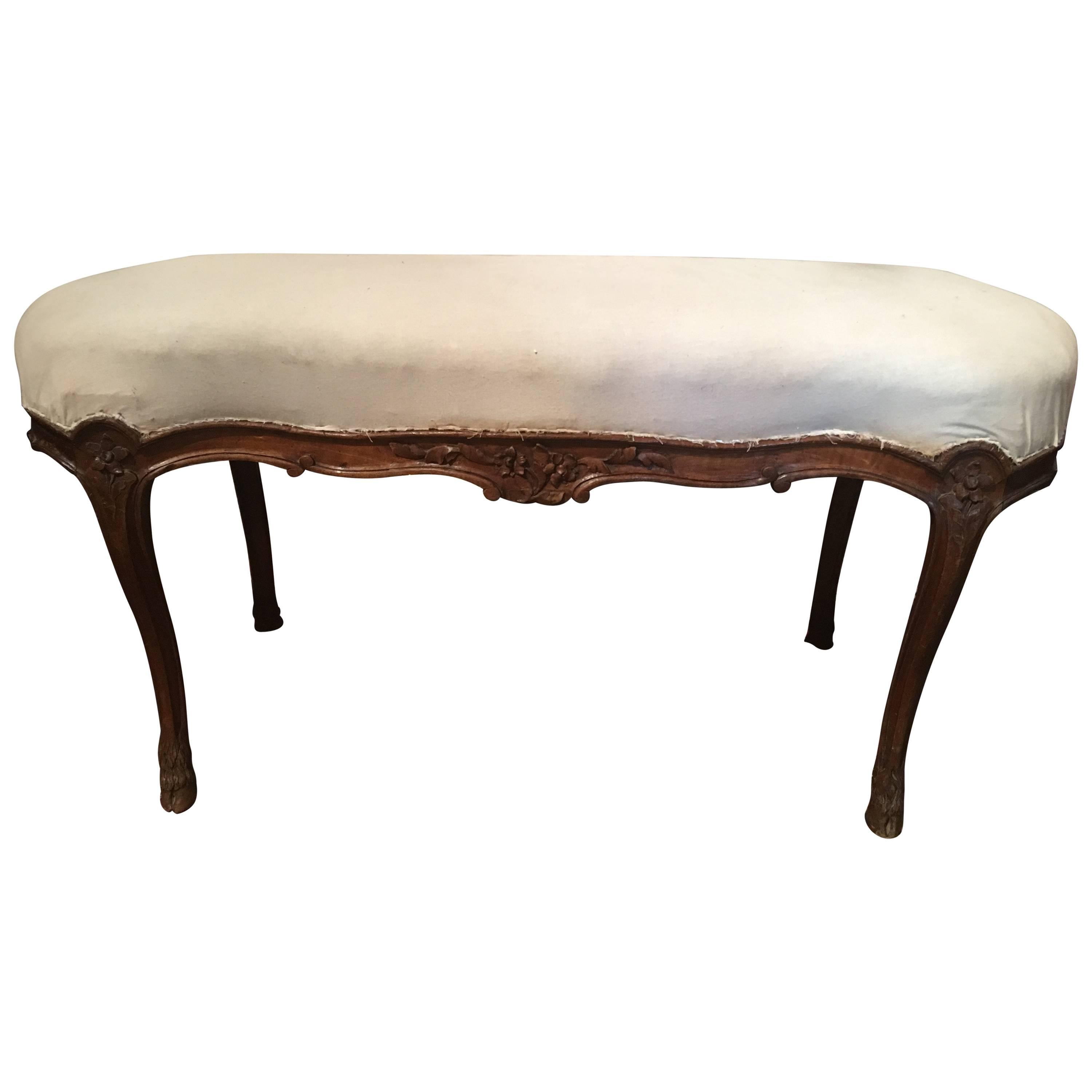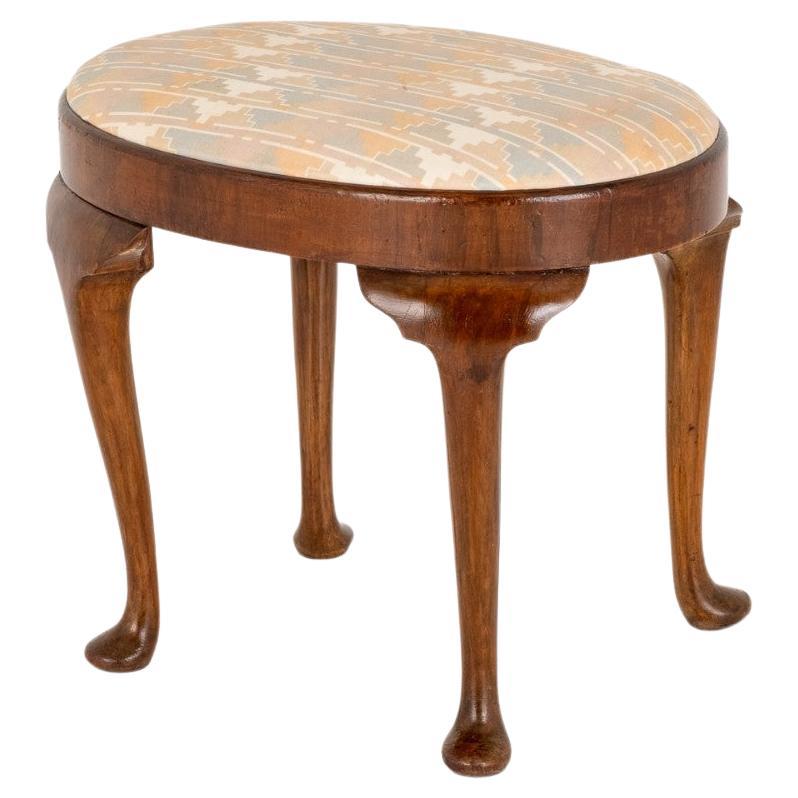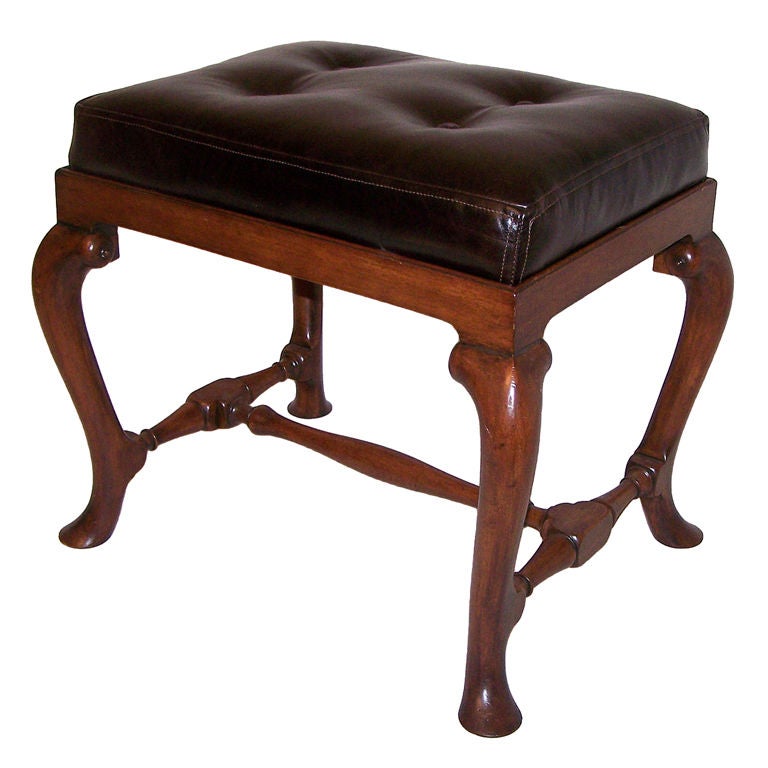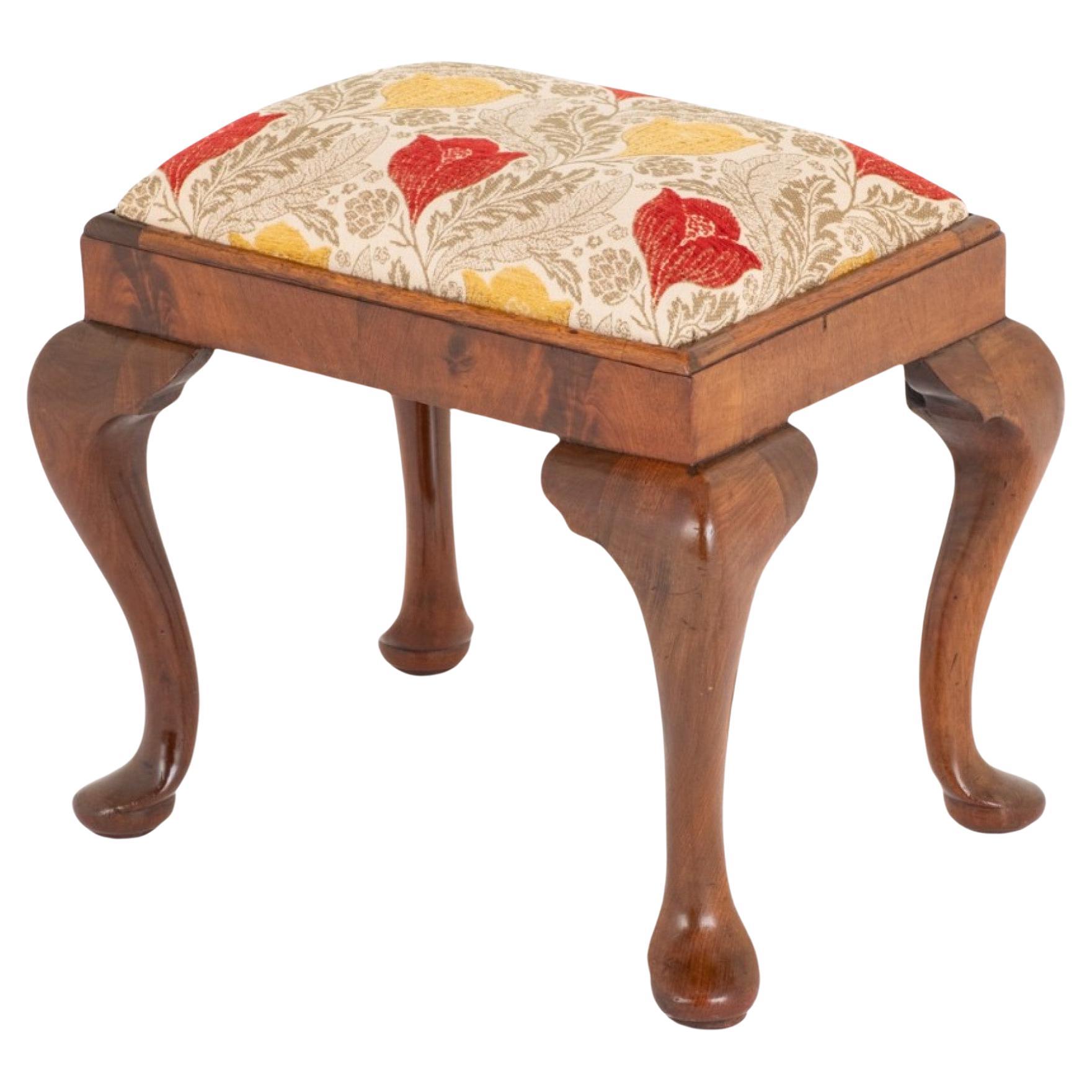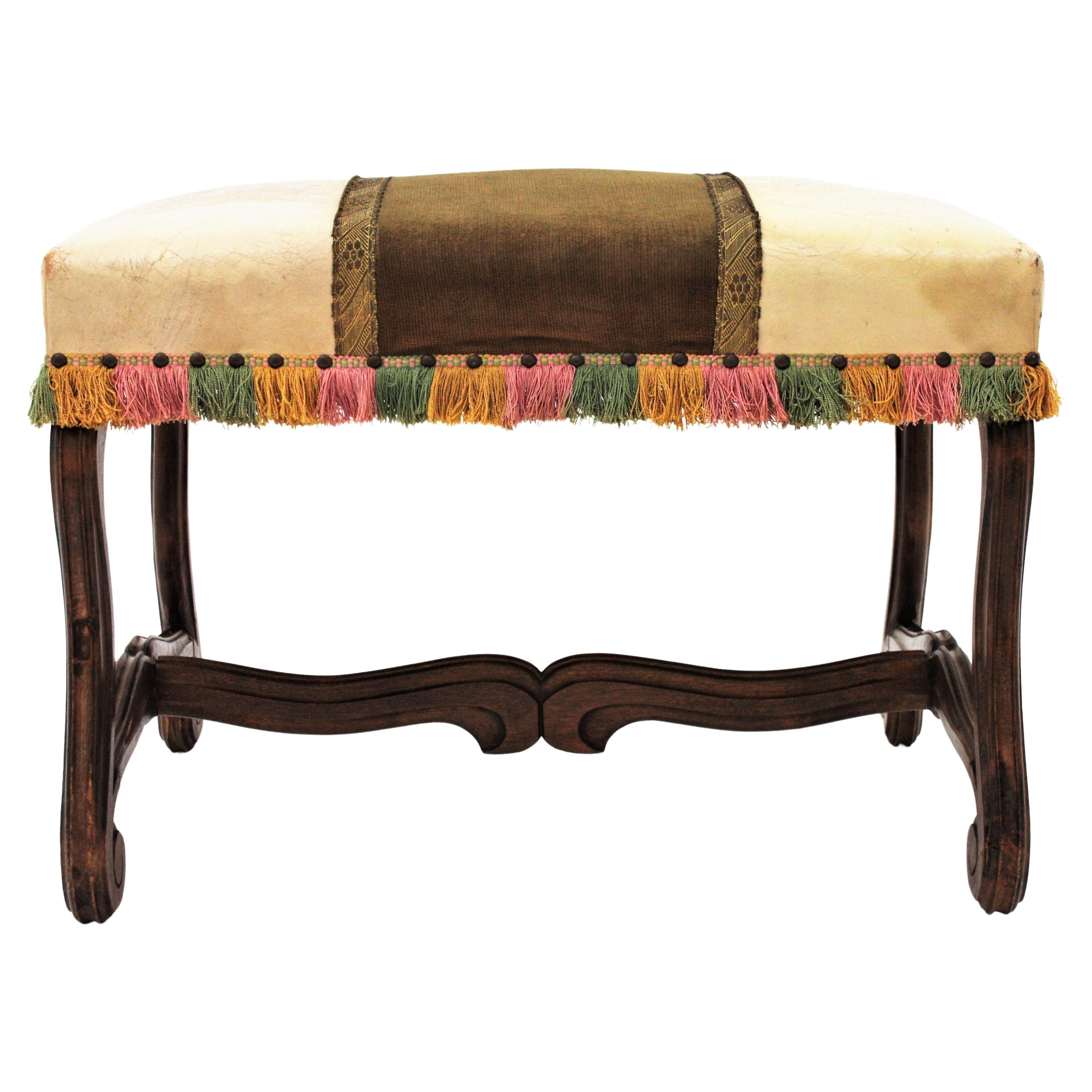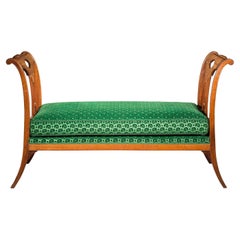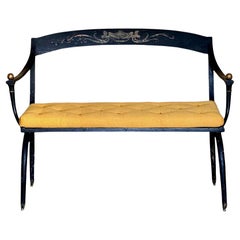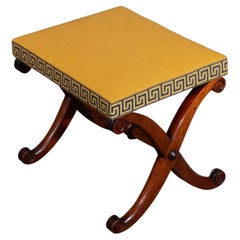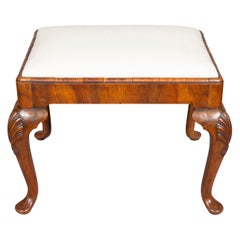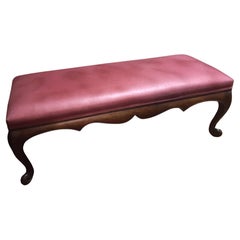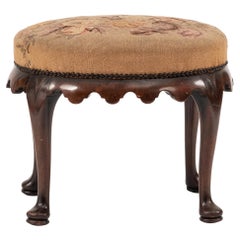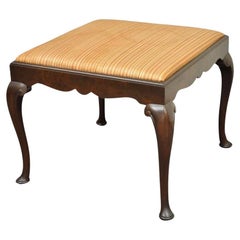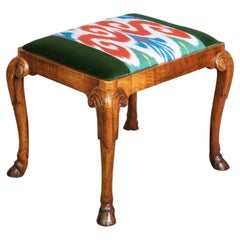
Antique Walnut Bench or Stool of Queen Anne Style, on Cabriole Horse Hoof Feet
View Similar Items
Want more images or videos?
Request additional images or videos from the seller
1 of 12
Antique Walnut Bench or Stool of Queen Anne Style, on Cabriole Horse Hoof Feet
About the Item
- Dimensions:Height: 19.69 in (50 cm)Width: 24.02 in (61 cm)Depth: 18.12 in (46 cm)Seat Height: 19.69 in (50 cm)
- Style:Queen Anne (In the Style Of)
- Materials and Techniques:
- Place of Origin:
- Period:
- Date of Manufacture:circa 1920's
- Condition:Wear consistent with age and use. Ready for placement and immediate use. Superb antique condition, newly recovered in Ikat and velvet.
- Seller Location:Richmond, GB
- Reference Number:1stDibs: LU1781241063202
About the Seller
5.0
Gold Seller
Premium sellers maintaining a 4.3+ rating and 24-hour response times
Established in 2014
1stDibs seller since 2016
234 sales on 1stDibs
Typical response time: 4 hours
Associations
LAPADA - The Association of Arts & Antiques Dealers
Authenticity Guarantee
In the unlikely event there’s an issue with an item’s authenticity, contact us within 1 year for a full refund. DetailsMoney-Back Guarantee
If your item is not as described, is damaged in transit, or does not arrive, contact us within 7 days for a full refund. Details24-Hour Cancellation
You have a 24-hour grace period in which to reconsider your purchase, with no questions asked.Vetted Professional Sellers
Our world-class sellers must adhere to strict standards for service and quality, maintaining the integrity of our listings.Price-Match Guarantee
If you find that a seller listed the same item for a lower price elsewhere, we’ll match it.Trusted Global Delivery
Our best-in-class carrier network provides specialized shipping options worldwide, including custom delivery.More From This Seller
View All18th Century Louis XVI Bedroom Bench or Daybed by George Jacob
By Georges Jacob
Located in Richmond, London
A fine French late 18th century Klismos bench, of great colour and desirable generous proportions.
Stamped G.Jacob.
France, circa 1795.
Why we like it
A handsome, timeless design. With its curved sabre legs at either end, this bench relates to the ancient Greek 'Klismos' seats, often seen depicted on Attic pottery. Its superb quality, splendid patination and a recorded maker...
Category
Antique Late 18th Century French Directoire Benches
Materials
Upholstery, Wood
Rare 19th Century Painted Bench or Settee, ex-Madeleine Castaing, after Chapuis
By Jean Joseph Chapuis
Located in Richmond, London
A very rare 'curule' settee, late 19th century after a design by Jean-Joseph Chapuis.
Provenance: Madeleine Castaing, Maison de Lèves, Chartres, France.
Why we like it
Besides the iconic provenance, this bench is a great example of the 19th century design, informed by classical antiquity. Decorated in the exotic 'Etruscan' style to simulate patinated bronze, with its dramatically exaggerated curves, evoking the ancient Roman 'sella curulis' - a symbol of magisterial power, this settee is truly a special example of its kind. A squab cushion covered in a fabric complimenting other textiles in the existing interior will complete the look of this super-stylish bench.
Provenance – Madeleine Castaing
Together with a pair of armchairs en-suite (sold by us in may 2022), this settee was photographed in the vestibule at Maison de Lèves near Chartres - country house of the iconic French interior designer and antiques dealer Madeleine Castaing (1894–1992). Madeleine married the heir and art critic Marcellin Castaing – the legendary love of her life – who in the 1920's acquired a neoclassical gentilhommière at Lèves, that she had been admiring since her days in a convent school nearby, for her to "unwind" as he explained. The house would become one of her masterpieces as she discovered her own vocation for interior design. Extant photographs reveal a number of changes that had been made to the interiors over time. The writer Maurice Sachs once wrote about Madeleine's passion for her home: “The constant transformations she made to the estate kept her as busy as the world can keep a socialite…”. The contents of Maison de Lèves as well as Castaing's Rue Jacob...
Category
Antique Late 19th Century Belgian Neoclassical Revival Benches
Materials
Wood, Cane, Upholstery
Early 19th Century X-Frame Stool
By Gillows of Lancaster & London, Thomas Hope
Located in Richmond, London
A rare example of a finely drawn Regency period x-frame stool or bench, beautifully upholstered in butter yellow cotton with wide Greek key meander trim. Of Gillows style and quality...
Category
Antique Early 19th Century English Regency Benches
Materials
Upholstery, Wood
Pair of Klismos Stools
Located in Richmond, London
A pair of Regency style 'Klismos' stools or benches, upholstered in beautiful horsehair fabric. It is rare to have two stools available in this classical design.
Why we like them
Th...
Category
Antique 19th Century English Neoclassical Stools
Materials
Upholstery
$4,070 / set
Large Antique Coromandel or Kuancai Lacquer Screen
Located in Richmond, London
A superbly decorative six-panel lacquered 'Coromandel' screen, exquisitely carved and hand-painted with oriental figures, flowers and exotic beasts on a dark brown background, in the traditional 17th century manner.
Late 19th – early 20th century.
Why we like it
We like its impressive proportions which make it perfect for a feature wall, and the exquisite quality of decoration. The subtlety of colours lends a 'soft' look to the piece. The central motif depicts a scene set in the gardens of a Han dynasty palace, while the outer borders are decorated with the “one hundred antiques” motif interspersed with floral arrangements. In this regard, the present screen not only conveys auspicious meanings but also demonstrate the owner’s fine scholarly taste.
History
The term 'Coromandel', which is used to describe this particular type of lacquer technique (kuancai), is rather misleading. In the 18th century it was used commercially to indicate the place from which these objects were shipped to England through the East India Companies, and had no reference to China, the place of their origin. Similarly, Chinese painted wallpaper was often called 'India paper' in historic documants.
The kuancai lacquer technique, literally meaning “cut out colour” and found almost exclusively on screens, emerged in the 16th century to serve the domestic market. The iconographic elements were carved through the built-up coats of dark lacquer and filled with pigments and gold. Seventeenth century examples usually consisted of twelve panels, and were often employed in entrance halls or as room dividers or windscreens for gardens and terraces. They were often commissioned as gifts and depicted court scenes, episodes from the world of the immortals, panoramic or landscape views and auspicious symbols. This type of lacquerware was flourishing during the reign of the Kangxi emperor (1662-1722) and saw a revival in the 19th century.
Stylistically the present screen may be compared with the twelve-panel lacquer screen from the Kangxi period in the Victoria and Albert Museum illustrated by W. De Kesel and G. Dhont in Coromandel Lacquer Screens, ill. 23, pps 36-37.
Such luxurious items were popular in England during the height of fashion for oriental exoticism, called chinoiserie in Europe. In the 20th century, Coromandel screens still remained a staple in the European interior design. Coco Chanel had a collection of 32 rare Coromandel screens, which she proudly displayed in her home at 31 Rue Cambom, Paris. She one...
Category
Early 20th Century Asian Chinoiserie Screens and Room Dividers
Materials
Wood, Lacquer
Pair of Early Georgian Vernacular Hall Chairs
Located in Richmond, London
A pair of unusual early Georgian period walnut hall chairs of 'ladderback' design. English, circa 1740.
Why we like it
A very rare example of vernacular design to be so superbly cra...
Category
Antique Mid-18th Century English Queen Anne Chairs
Materials
Walnut
$3,973 / set
You May Also Like
Queen Anne Style Walnut Bench
Located in Essex, MA
With rectangular drop in new muslin seat surrounded by a molded frame and frieze raised on cabriole legs with shell knees and pad feet.
Category
Antique 1860s English Queen Anne Benches
Materials
Walnut
Queen Anne Style Wooden Long Bench
Located in Savannah, GA
This graceful Queen Anne style long bench offers upholstered seat raised on carved walnut cabriole legs terminating scrolled feet, 20th century.
A great piece for the end of a bed.
Category
Mid-20th Century English Queen Anne Benches
Materials
Fabric, Hardwood
$676 Sale Price
20% Off
English Queen Anne Style Needlepoint Bench
Located in Queens, NY
English Queen Anne style (19th century) oval walnut bench with scalloped apron and needlepoint seat.
Category
Antique 19th Century French Queen Anne Benches
Materials
Walnut
Antique Schmieg & Kotzian Mahogany Wood Queen Anne Square Stool Bench Ottoman
By Schmieg & Kotzian
Located in Philadelphia, PA
Antique Crotch Mahogany Queen Anne Style Square Stool by Schmieg & Kotzian. Item features solid wood construction, Queen Anne Legs, Pad Feet, Shaped Skirt, Classic Traditional Form, ...
Category
Vintage 1910s Queen Anne Benches
Materials
Mahogany
Late 20th Century Queen Anne Style Solid Cherry and Upholstered Bench / Stool
Located in Germantown, MD
A Late 20th Century Queen Anne Styly Solid Cherry and Upholstered Vanity Bench. Measures 20" in width, 17" in depth and stands 18.5" tall. Cle...
Category
Late 20th Century American Queen Anne Benches
Materials
Upholstery, Cherry
$770 Sale Price
30% Off
A Pair of Queen Anne Style Walnut Benches
Located in New York, NY
Old meets new in this great looking pair of Queen Anne style benches. Each has a rectangular top, supported by graceful cabriole legs. They have been reupholstered in a vibrant faux...
Category
20th Century Unknown Queen Anne Ottomans and Poufs
Materials
Walnut
$2,125 / set
Recently Viewed
View AllMore Ways To Browse
Coffee Table With Rivets
Coiffeuse Table
Coiled Rattan
Console Table By Paolo Buffa
Continental Silver Company
Copper Leaves Wall Art
Copper Oval Tray
Coquina Stone
Coral Tabletop
Corbusier Ottoman
Corten Steel Table
Couple Courting Painting
Crescent Plate Set
Cross Stitch Samplers
Crushed Velvet Couch
Crushed Velvet Sofa
Crystal Cordial Glasses
Crystal Cordial
